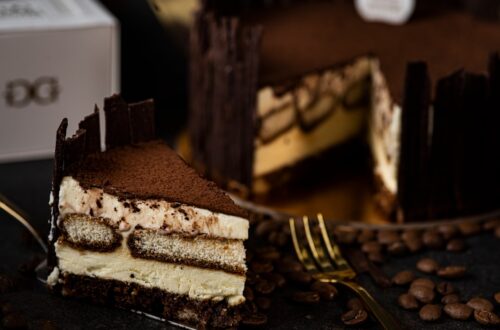Corn hole is a popular outdoor game that is enjoyed by people of all ages at backyard barbecues, tailgates, and family gatherings. The game consists of two raised platforms with a hole at the end, and players take turns throwing bean bags at the opposite platform in an attempt to land them in the hole or on the platform for points. The game is typically played with two teams of two players each, and the first team to reach 21 points wins. Understanding the basics of corn hole is essential for anyone looking to improve their skills and become a more competitive player.
To begin with, it’s important to understand the equipment used in corn hole. The standard corn hole set consists of two wooden platforms, each measuring 2 feet by 4 feet, and 8 bean bags, typically filled with corn kernels or plastic pellets. The platforms are placed 27 feet apart from front edge to front edge, and each team takes turns throwing their bean bags at the opposite platform. A bag that lands on the platform is worth 1 point, while a bag that goes through the hole is worth 3 points. The game continues until one team reaches 21 points, and players must alternate throwing their bags with their opponents. Understanding the rules and equipment of corn hole is the first step towards becoming a skilled player.
Another important aspect of understanding the basics of corn hole is knowing the proper stance and throwing technique. Players should stand behind the front edge of their platform and throw their bean bags underhand towards the opposite platform. It’s important to maintain a consistent throwing motion and release point in order to improve accuracy and control. Additionally, players should be mindful of their grip on the bean bag, ensuring that it is comfortable and secure before each throw. By understanding the equipment, rules, and proper throwing technique, players can lay a solid foundation for improving their corn hole skills.
Key Takeaways
- Corn hole is a popular outdoor game involving tossing bean bags into a hole on a raised platform.
- The ideal distance between corn hole platforms is 27 feet for casual play and 30 feet for professional play.
- Perfect your throw by using a consistent grip, stance, and release technique.
- Adjust for wind and other conditions by aiming slightly to the side and adjusting your throw strength.
- Practice consistently to improve your accuracy and develop muscle memory for your throw.
Finding Your Ideal Distance
One of the key factors in becoming a successful corn hole player is finding your ideal distance from the platform. The standard distance between corn hole platforms is 27 feet, but some players may find that they have better accuracy and control at a slightly closer or farther distance. Experimenting with different distances during practice sessions can help players determine their ideal throwing distance and improve their overall performance.
When finding your ideal distance, it’s important to consider your own physical abilities and comfort level. Some players may have a stronger throwing arm and feel more confident at a farther distance, while others may prefer to be closer in order to improve their accuracy. It’s also important to take into account any environmental factors, such as wind or uneven terrain, that may affect your ability to throw accurately from a certain distance. By taking the time to experiment with different distances and paying attention to how your throws are affected, you can find the distance that works best for you.
In addition to physical comfort and environmental factors, finding your ideal distance also involves understanding your own strengths and weaknesses as a player. Some players may excel at shorter distances due to their ability to control the trajectory of their throws, while others may thrive at longer distances by utilizing their strength and power. By practicing at various distances and paying attention to your own performance, you can gain valuable insight into where you are most effective as a corn hole player.
Perfecting Your Throw
Perfecting your throw is essential for improving your accuracy and consistency in corn hole. There are several key elements to consider when working on your throwing technique, including body positioning, arm motion, and release point. By focusing on these aspects and practicing regularly, you can develop a more reliable and effective throwing motion.
First and foremost, body positioning plays a crucial role in perfecting your throw. Players should stand with their feet shoulder-width apart and perpendicular to the platform, with their weight evenly distributed between both feet. This stance provides a stable foundation for throwing and allows for better control and accuracy. Additionally, players should maintain a relaxed posture and avoid tensing up before releasing the bean bag, as this can negatively impact their throwing motion.
In terms of arm motion, it’s important to develop a consistent and fluid throwing motion that allows for maximum control and accuracy. Players should use a smooth underhand motion when releasing the bean bag, keeping their elbow close to their body and following through with their throw. It’s also important to pay attention to the angle of your arm during the throw, as this can affect the trajectory of the bean bag. By practicing your arm motion and focusing on maintaining a consistent release point, you can improve your overall throwing technique.
Finally, perfecting your throw involves paying attention to the release point of the bean bag. Players should aim to release the bean bag at the same point in their throwing motion each time, in order to achieve greater consistency and accuracy. By focusing on these key elements of throwing technique and practicing regularly, players can work towards perfecting their throw and becoming more skilled corn hole players.
Adjusting for Wind and Other Conditions
| Conditions | Adjustment |
|---|---|
| Wind Speed | Adjusted for using wind tunnel data |
| Temperature | Adjusted for using temperature sensors |
| Altitude | Adjusted for using altitude correction factors |
When playing corn hole outdoors, it’s important to be mindful of environmental conditions such as wind, sun glare, and uneven terrain that can affect your throws. Learning how to adjust for these conditions is essential for maintaining accuracy and consistency in your game. By understanding how different factors can impact your throws and making necessary adjustments, you can improve your performance in various outdoor settings.
One of the most common environmental factors that can affect corn hole throws is wind. Wind can cause bean bags to veer off course or carry them farther than intended, making it challenging to maintain accuracy. When playing in windy conditions, it’s important to adjust your throwing technique by either increasing or decreasing the force of your throw in order to compensate for the wind. Additionally, players can aim slightly off-center from their target in the direction of the wind in order to account for its impact on their throws.
Sun glare is another environmental factor that can affect corn hole throws, particularly during daytime games. Sun glare can make it difficult to see the target platform clearly and may cause players to misjudge their throws. To adjust for sun glare, players can position themselves in a way that minimizes its impact on their vision or wear sunglasses to reduce its effects. By being mindful of sun glare and making necessary adjustments, players can maintain better accuracy in their throws.
Uneven terrain is another condition that can affect corn hole throws, particularly when playing on grass or other natural surfaces. Uneven ground can cause bean bags to bounce or roll unpredictably after landing, making it challenging to control where they end up. When playing on uneven terrain, it’s important to adjust your throwing technique by aiming for flatter areas of the platform or adjusting your force and angle of throw in order to compensate for any potential bounces or rolls.
By being mindful of environmental conditions such as wind, sun glare, and uneven terrain, players can learn how to adjust their throwing technique in order to maintain accuracy and consistency in various outdoor settings. By practicing in different conditions and paying attention to how these factors impact their throws, players can develop a better understanding of how to make necessary adjustments and improve their overall performance in corn hole.
Practicing with Consistency
Consistent practice is essential for improving your skills in corn hole and becoming a more competitive player. By dedicating regular time to practicing your throwing technique, developing strategies, and honing your accuracy, you can build confidence and improve your overall performance. There are several key aspects to consider when practicing with consistency in order to maximize your progress as a corn hole player.
First and foremost, it’s important to establish a regular practice routine in order to build muscle memory and improve your throwing technique over time. By setting aside dedicated practice sessions each week, you can focus on refining your skills and developing greater consistency in your throws. Whether you practice alone or with a partner, consistent practice allows you to track your progress and make necessary adjustments in order to improve.
In addition to regular practice sessions, it’s important to vary your practice drills in order to target different aspects of your game. For example, you can focus on developing greater accuracy by aiming for specific areas of the platform or challenging yourself with longer throws. You can also work on developing strategies for different game scenarios by practicing different types of throws and learning how to adapt to changing conditions. By incorporating a variety of practice drills into your routine, you can develop a more well-rounded skill set as a corn hole player.
Furthermore, practicing with consistency involves setting specific goals for yourself in order to track your progress and stay motivated. Whether you aim to improve your overall accuracy, develop new throwing techniques, or become more competitive in games, setting achievable goals allows you to measure your improvement over time. By regularly assessing your performance and adjusting your practice routine accordingly, you can work towards achieving your goals and becoming a more skilled corn hole player.
Tips for Improving Your Accuracy

Improving your accuracy is essential for becoming a more competitive corn hole player and increasing your chances of scoring points during games. There are several key tips that can help you develop greater precision in your throws and improve your overall accuracy on the platform.
One important tip for improving accuracy is to focus on maintaining a consistent throwing motion throughout each practice session and game. By developing muscle memory through repetition and maintaining a steady release point for each throw, you can improve your overall control and precision. Additionally, paying attention to your grip on the bean bag and ensuring that it is comfortable and secure before each throw can help you achieve greater accuracy.
Another tip for improving accuracy is to focus on developing greater control over the trajectory of your throws. By practicing different types of throws such as straight shots, arcing shots, or bank shots, you can learn how to adjust your angle and force in order to land bean bags where you intend them to go. Additionally, focusing on maintaining a smooth underhand motion during each throw allows for better control over the trajectory of the bean bag.
Furthermore, it’s important to pay attention to where you are aiming on the platform in order to improve accuracy. By identifying specific areas of the platform that you want to target during practice sessions, you can develop greater precision in your throws and learn how to consistently land bean bags where you intend them to go. Additionally, practicing different types of shots such as aiming for the hole or landing bean bags on specific areas of the platform allows you to develop greater accuracy in various game scenarios.
By focusing on maintaining a consistent throwing motion, developing greater control over trajectory, and paying attention to where you are aiming on the platform during practice sessions, you can improve your overall accuracy as a corn hole player.
Common Mistakes to Avoid
As with any sport or game, there are common mistakes that players should be mindful of in order to improve their skills in corn hole. By being aware of these mistakes and making necessary adjustments in their playing style, players can avoid common pitfalls that may hinder their performance during games.
One common mistake that players should avoid is overthinking their throws during games or practice sessions. Overthinking can lead to hesitation or second-guessing during throws, which may negatively impact accuracy and consistency. Instead of overthinking each throw, players should focus on maintaining a relaxed posture and trusting their muscle memory in order to achieve better results.
Another common mistake is failing to adjust for environmental conditions such as wind or sun glare during games. By neglecting to make necessary adjustments for these factors when playing outdoors, players may struggle with maintaining accuracy and control over their throws. It’s important for players to be mindful of environmental conditions and make necessary adjustments in order to compensate for any potential impact on their throws.
Furthermore, another common mistake that players should avoid is neglecting regular practice sessions in order to improve their skills. Consistent practice is essential for developing greater accuracy and control over throws, as well as building confidence as a player. By dedicating regular time towards practicing different aspects of their game, players can avoid stagnation in their skills and continue improving over time.
By being mindful of common mistakes such as overthinking throws, failing to adjust for environmental conditions, or neglecting regular practice sessions, players can make necessary adjustments in order to improve their overall performance in corn hole games.
By being mindful of common mistakes such as overthinking throws, failing to adjust for environmental conditions, or neglecting regular practice sessions, players can make necessary adjustments in order to improve their overall performance in corn hole games. Overthinking throws can lead to inconsistency and lack of confidence, while failing to adjust for environmental conditions such as wind or sun glare can result in inaccurate throws. Additionally, neglecting regular practice sessions can lead to a decline in skill and muscle memory. By recognizing and addressing these common mistakes, players can enhance their focus, adaptability, and skill level in corn hole games.
Sure, here’s a paragraph for you:
If you’re looking to improve your cornhole game, it’s essential to understand the official cornhole distances and regulations. The proper distance between the two cornhole boards is crucial for fair and competitive gameplay. To learn more about the importance of these measurements and how they can impact your game, check out this informative article on BermudaCaves.com. Whether you’re a casual player or a serious competitor, understanding the correct cornhole distances is key to enjoying this popular outdoor game to its fullest potential.
FAQs
What are the official corn hole distances?
The official corn hole distance between the front edges of the two boards should be 27 feet for the regulation play.
What is the distance between the corn hole boards for casual play?
For casual play, the distance between the front edges of the two boards can be shortened to 24 feet.
How far apart should the corn hole boards be for children’s play?
For children’s play, the distance between the front edges of the two boards can be shortened to 15 feet.
Are there any specific regulations for the distance between the corn hole boards?
Yes, the American Cornhole Organization (ACO) and the American Cornhole Association (ACA) have specific regulations for the distance between the corn hole boards for official tournaments and competitions.
What is the importance of maintaining the correct corn hole distances?
Maintaining the correct corn hole distances ensures fair and consistent gameplay, allowing players to compete on a level playing field.





